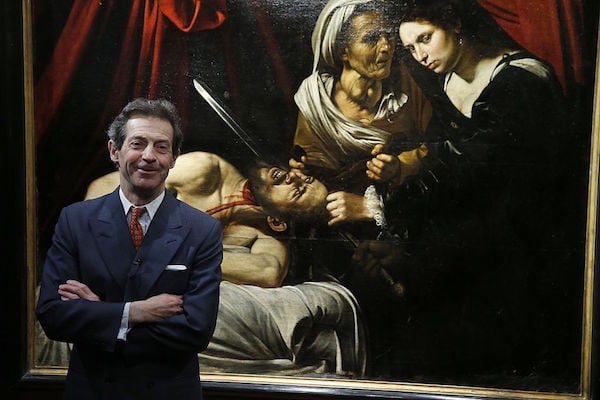Analysis
Experts Says Painting Found in French Attic is Long-Lost Caravaggio Masterpiece
The Old Master gem was found while fixing a leaky roof.

Photo: Patrick KovarikAFP/Getty Images.
The Old Master gem was found while fixing a leaky roof.

Lorena Muñoz-Alonso

On Tuesday, two French experts confirmed that the painting found in the attic of a private house near the French city of Toulouse is the long-lost second version of Caravaggio’s Judith Beheading Holofernes.
AFP reports that the expert Eric Turquin valued the painting at about €120 million ($137 million) and said the work possessed “the light, the energy typical of Caravaggio, without mistakes, done with a sure hand and a pictorial style that makes it authentic.”
Meanwhile, the Old Master expert Nicola Spinosa, former director of the Capodimonte Museum in Naples, wrote in an assessment: “One has to recognise the canvas in question as a true original of the Lombard master, almost certainly identifiable, even if we do not have any tangible or irrefutable proof.”
The lack of irrefutable proof is indeed a problem for a whole host of other experts, who disagree with Turquin’s optimistic authentication.
Turquin himself told AP that two Caravaggio experts he consulted had attributed the painting to Louis Finson, a Flemish painter and art dealer who was familiar with Caravaggio’s work. “There will never be a consensus about the name of the artist,” Turquin admitted.

Caravaggio, Judith Beheading Holofernes (circa 1598-1599).
Photo: Wikimedia Commons.
The painting was found a private house in southwest of France two years ago, in April 2014, when the owners of the property climbed to the attic to investigate the source of a leak in the roof, according to El País.
After forcing open a locked door, to which they had no keys for, they found the canvas, covered in dust and grime but in remarkable good condition despite having been kept there, it is believed, for at least a century and a half.
The discovery—hailed by some as the most important Old Master painting to have emerged in recent times—was kept in secret. It only came to light as few weeks ago, as a result of a 30-month export ban imposed by the French Ministry of Culture on March 25, 2016.
“This recently rediscovered work of great artistic value, which could be identified as a lost composition of Caravaggio, known so far by indirect evidence, merits being retained in the territory as a very important milestone in the work of Caravaggio, while its attribution is researched,” read the statement released by the Ministry.
Caravaggio painted two versions of the biblical scene in which Judith is seen beheading the Assyrian general Holofernes to defend her beleaguered city. The first version, painted in Rome, is currently on display at Rome’s National Gallery of Ancient Art. The second version, which was painted in Naples, has been missing since the early 17th century—until now, according to Turquin.